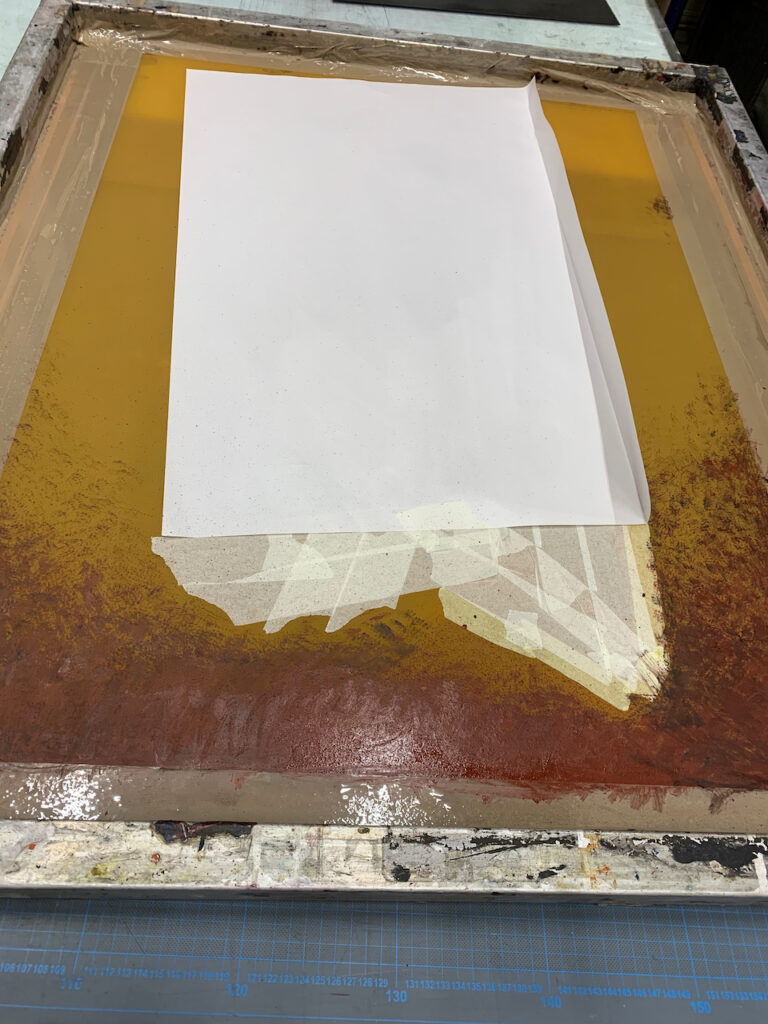Spray spotting out with a toothbrush is a quaint/curious print room technique. The toothbrush can be found in various print room locations waiting to be picked up by the printmaker to be applied to their selected process. It will be used for the reverse of its intended use to vigorously clean the user’s teeth. In the print room the toothbrush is used for a range of media. Wiping etching plates of acid, spraying spots of touche on litho stones, or directly on silkscreens to create dotted marks. Spotting with the brush is not as uniform as the blow or airbrush, or the digital sprays in photoshop that are 100% predictable. It’s material unpredictability is not fully controlled by the user and can lead to positive visual results.

It also leaves deposits of the fluid hardened on the thumb and forefinger used to apply the spray. The fluid builds up unnoticed as the focus of the exercise it to ensure the spraying is achieving the hoped-for results. When complete, the thumb in particular is caked in the red brown fluid and cannot be removed with ease. Scrubbing under the flowing tap in the sink removes a good deal of the hardened engrained material, but invariably it is retained under the nails and along the cuticles where the hard nail meets the holding skin. For coming days cleaning attention must be paid to hand washing to get back to the clean skin that is replenished in the normal course of epidermis (outer skin) replacement.
(Epidermis: The Outer Layer of Skin
The epidermis is the thinnest layer in your skin, but it’s responsible for protecting you from the harsh environment. The epidermis has four layers of its own: stratum germinativum, stratum spinosum, stratum granulosum, and stratum lucidum. The epidermis also hosts different types of cells: keratinocytes, melanocytes and Langerhans cells. Keratinocytes produce the protein known as keratin, the main component of the epidermis. Melanocytes produce your skin pigment, known as melanin. Langerhans cells prevent foreign substances from getting into your skin.
Printmaking: a contemporary perspective , Wendy Alexandra. (P5)
The process of creating the matrix from which the print is lifted involves reductive processes. This duality interested me and I began to incorporate this information directly into the surface of my prints. Through trial and error of various applications my work has evolved to incorporate elements such as surface scratching, manual sanding, and sandblasting.

